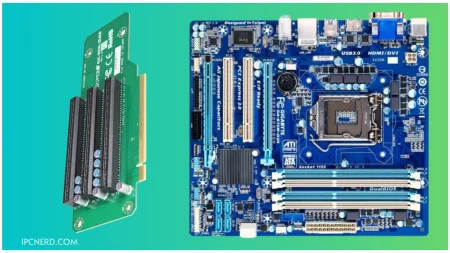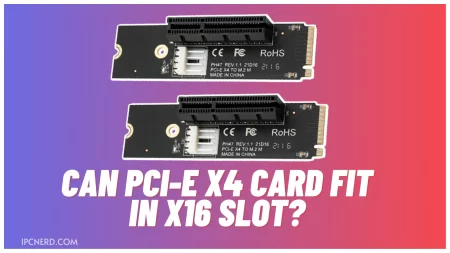A CPU cooler is the most important part of your PC cooling system. Without a CPU cooler, your computer won’t be able to dissipate heat properly, and it could potentially overheat. This article will explore how you can choose the right cooler for your needs.
- Things to Consider When Buying an Aftermarket CPU Cooler
- How to Choose the Right Size Aftermarket CPU Cooler for Your PC
- 1. Know Your System’s Specifications
- 2. Compare Features and Prices
- 3. Consider Size and Weight
- Different Types of Aftermarket CPU Coolers
- Why Should You Get an Aftermarket CPU Cooler?
- Features to Look For in an Aftermarket CPU Cooler
- What to Look For When Buying an Aftermarket CPU Cooler
- Cooling Capacity
- Type of Heat Sink
- PriceÂ
- Quality of Construction
- Frequently Asked Questions
- Conclusion
Things to Consider When Buying an Aftermarket CPU Cooler
There are a few things to consider when purchasing an aftermarket CPU cooler. The first is the type of cooler you need. There are two main types of coolers: air and water cooling. Air coolers push the heat away from your processor, while water cooling involves using a water reservoir with a pump to circulate cold water over your processor.
Once you know the cooler you need, the next question is how much money you want to spend—after that, deciding which features are important to you is important.
Some common features include compatibility with your motherboard, size and weight, noise level, and price. Once you have all these factors figured out, it’s time to look for a cooler that meets your needs.
How to Choose the Right Size Aftermarket CPU Cooler for Your PC
Choosing the right aftermarket CPU cooler for your PC can be challenging. There are many different types, sizes, and features to choose from. Here are some tips to help you find the best one for your system:
1. Know Your System’s Specifications
First, you need to know your computer’s specifications. This includes the type of CPU and the number of cores it has. You also need to know the type of cooling your computer already has and the size of its fan(s).
2. Compare Features and Prices
Next, compare features and prices between different aftermarket CPU coolers. Look for coolers with good fan speed ratings, extra heatsinks or fans, and mounting brackets/adapters. Read reviews before purchasing to know how well each cooler performs in real-world scenarios.
3. Consider Size and Weight
Finally, consider size and weight when choosing an aftermarket CPU cooler. Make sure the cooler is small enough to fit inside your PC case without taking up too much space and is light enough that you won’t feel burdened when carrying it around.
Different Types of Aftermarket CPU Coolers
There are a few different aftermarket CPU coolers on the market, so it can be hard to know which one is right for you. Here’s a look at each type and what they offer:
1. Fanless Coolers: These are the simplest type of cooler, and they just use fans to circulate air around the processor. They’re usually cheaper than other coolers, but they may not be as effective.
2. Low-Profile Coolers: These coolers are designed to be installed in smaller cases or computers without much room for cooling hardware. They often come with special mounting brackets that make them easy to install.
3. High-Performance Coolers: These coolers have more features than low-profile coolers, including tool-free installation and increased performance over standard fan-cooled processors. They can be a bit more expensive than other coolers, but they’re worth it if you’re looking for top performance.
Why Should You Get an Aftermarket CPU Cooler?
If you want to improve your PC’s cooling performance, an aftermarket CPU cooler may be the right option. (…)
There are a variety of benefits to choosing an aftermarket CPU cooler. For example, custom coolers can often be tailored better to match your computer’s specific needs and specifications, providing greater customization and control over your system’s cooling performance.
Additionally, aftermarket coolers are often cheaper than stock coolers and may offer improved performance or features that you wouldn’t find in a stock cooler.
So why should you get an aftermarket CPU cooler? There are many reasons, but the most important is that customizing your cooling solution can significantly boost system performance. An aftermarket CPU cooler may be the perfect solution if you’re looking for increased overall system stability, longevity, and improved cooling efficiency.
Features to Look For in an Aftermarket CPU Cooler
1. Make sure the cooler has a fan capable of reaching adequate speeds. An inadequate fan will not be able to keep your CPU cool and may even cause it to overheat.
2. Make sure the cooler has a high-quality heat pipe system. A poorly designed heat pipe system will not be able to transfer enough heat from the CPU to the cooler, resulting in a decrease in performance.
3. Pay attention to the size of the fan and the number of fins on the cooler. The bigger the fan and the more fins on the cooler, the more air it can move, thus the faster it can cool your CPU.
4. Check out reviews before making a purchase – reading through customer feedback can help you identify any potential problems with a particular product before you buy it. If there are any major complaints about a specific brand or model, you may want to avoid them altogether.
What to Look For When Buying an Aftermarket CPU Cooler
When purchasing an aftermarket CPU cooler, you should consider a few things. The first is the cooling capacity of the cooler. The second is the type of heat sink the cooler uses. The third is the price, and the fourth is the quality of construction. Here we will discuss each of these factors in more detail:
Cooling Capacity
The first consideration when choosing an aftermarket CPU cooler is the cooling capacity. This refers to how much heat the cooler can dissipate. There are two main types of coolers: air and water cooling. Air coolers use air to cool the CPU; water coolers use cold water to keep the CPU cool.
Air coolers tend to have lower cooling capacities than water coolers, but they are cheaper and easier to install. Water coolers typically have higher cooling capacities than air coolers, but they are more expensive and require more complex installation procedures.
Type of Heat Sink
The type of heat sink used by a CPU cooler is also important. There are three main types of heat sinks: copper, aluminum, and plastic. Copper heat sinks are best for high-performance CPUs because they distribute heat evenly and quickly.
Aluminum heat sinks are better for medium-to-high-performance CPUs because they offer good thermal conductivity and durability. Plastic heat sinks are best for low-performance CPUs because they dissipate heat quickly and do not rust over time as copper or aluminum heatsinks can do.
Price
Another important factor to consider when purchasing an aftermarket CPU cooler is the price. Some coolers, such as the Hyper 212 Evo, are affordable, while others, such as the Thermalright Extreme 120mm, are more expensive. It is important to research different coolers and find one that meets your needs and budget.
Quality of Construction
Finally, it is important to consider the quality of construction when purchasing an aftermarket CPU cooler. Some coolers, such as the Cooler Master Hyper 212 Evo, are built with high-quality materials that will last for years.
Other coolers, such as the Arctic Freezer 7 Pro, are made with lower-quality materials that may not last as long. It is important to research different coolers and find one that meets your needs and budget.
Frequently Asked Questions
What is an aftermarket CPU cooler?
An aftermarket CPU cooler is a device that’s designed to replace your stock CPU cooler. Aftermarket coolers are often more effective and provide a better thermal solution for your computer. They can also be more affordable than buying a new stock CPU cooler.
What are the benefits of using an aftermarket CPU cooler?
Some benefits of an aftermarket CPU cooler include increased performance, better thermal solution, and increased reliability. Increased performance can be seen in tasks that require heavy processing or gaming. A better thermal solution will help keep your computer thermally stable and allow it to run at its full potential. Increased reliability comes from the fact that aftermarket coolers are often made with higher-quality materials than stock coolers, which means they’re less likely to break down over time.Â
What are some of the risks associated with using an aftermarket CPU cooler?
There are a few risks associated with using an aftermarket CPU cooler. First, aftermarket coolers can often be more effective than stock coolers, resulting in higher temperatures and potential damage to your computer. Second, aftermarket coolers can be more expensive than stock coolers, which may not be feasible for some people. Third, an aftermarket cooler can void your warranty if your computer is not properly cooled. Finally, you should always ensure that your computer is properly assembled before installing an aftermarket CPU cooler to avoid any damage to your computer.
Conclusion
It can be difficult to determine the best CPU cooler for your needs, especially if you don’t have much experience with this type of hardware. That’s why I’ve put together this guide on how to find the right aftermarket CPU cooler for your PC.
By following these tips, you should be able to find a CPU cooler that meets your specific needs and fits into your budget.







